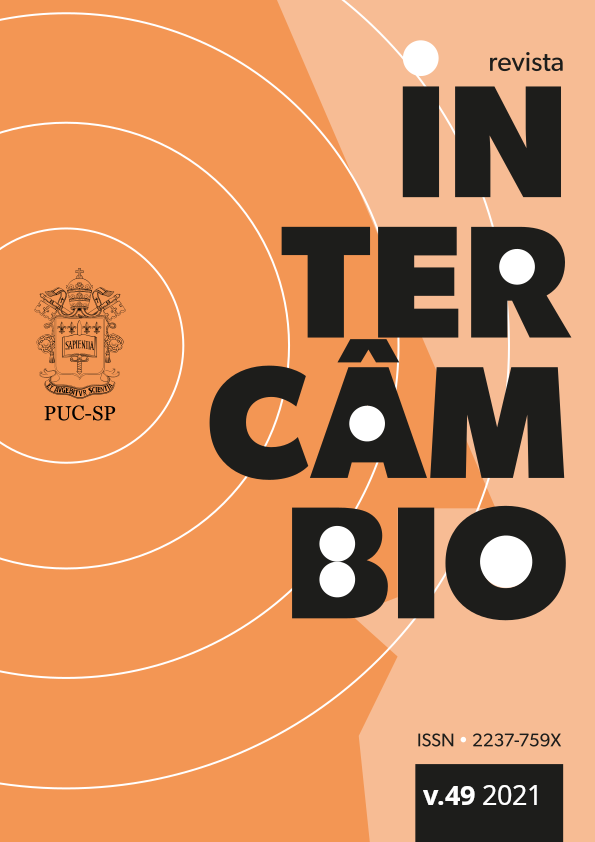Investigando a autoavaliação e o ensino de língua inglesa
Palavras-chave:
autoavaliação, ensino de língua inglesa, autonomiaResumo
Este artigo traz os resultados do recorte de um amplo estudo qualitativo sobre autoavaliação, autonomia e língua inglesa no ensino médio de uma instituição pública. A concepção de autoavaliação voltada ao desempenho fundamenta esta investigação que apresenta comparações entre as notas de autoavaliação de alunos em uma atividade oral, baseados em critérios discutidos e descritos previamente, e as fornecidas pelo professor da disciplina. Os resultados demonstram ausência de similaridades entre as notas e revelam que alunos com médias elevadas tendem a se autoavaliar com notas mais baixas do que as obtidas, situação oposta à identificada junto aos estudantes com médias menos elevadas.Referências
ADELMAN, C., JENKINS, D., KEMMIS, S. Rethinking case study: notes from the second Cambridge conference. Cambridge Journal of Education, v. 6, n. 3, p.139-150, 1976.
BACHMAN, L. F. Learner-directed assessment in ESL. In: G. EKBATANI, H. PIERSON (Eds.), Learner-directed assessment in ESL (pp. ix-xii). New Jersey: Lawrence Erlbaum Associates, Inc., 2000.
BENSON, P. Teaching and researching autonomy in language learning. London: Longman, 2001
BLATCHFORD, P. Students’ self assessment of academic attainment: Accuracy and stability from 7 to 16 years and influence of domain and social comparison group. Educational Psychology, 17(3), p.345-360, 1997.
BLUE, G.M. Self-assessment: the limit of learner independence. In: BROOKES, A.; GRUNDY, P. (eds.). Individualisation and autonomy in language learning. ELT documents, 131. London: Modern English Publications in association with the British Council (Macmillan), 1988.
BRASIL. MINISTÉRIO DA EDUCAÇÃO. Base Nacional Comum Curricular (ensino médio), 2018.
BRASIL. MINISTÉRIO DA EDUCAÇÃO. Diretrizes Curriculares Nacionais para Educação Básica, 1996.
DAVIDSON F. AND HENNING, G. A self–rating scale of English difficulty: Rasch scalar analysis. Language Testing 2: p.164‒179, 1985.
DICKINSON, L. Self-instruction in language learning. London: Cambridge University Press, 1987.
FENER, A. B. AND NEWBY, D. Approaches to materials design in European textbooks: Implementing principles of authenticity, learner autonomy, cultural awareness. European Centre for Modern Languages of the Council of Europe Publishing, 2000.
GHOLAMI, H. Self Assessment and Learner Autonomy. Theory and Practice in Language Studies, v. 6, n. 1, p. 46-51, 2016.
HAUGHTON, G., DICKINSON, L. Collaborative assessment by masters’ candidates in a tutor based system. Language Testing, 5, p.233-246, 1988.
HOLEC, H. Autonomy and Foreign Language Learning. Oxford/New York: Pergamon Press, 1981.
JACOBS, G. M., FARRELL, T. S. C. Paradigm shift: Understanding and implementing change in second language education. TESL-EJ, 5, 1, 2001.
KLENOWSKI, V. Student self-evaluation processes in student-centred teaching and learning contexts of Australia and England. Assessment in Education, 2(2), p.145-163, 1995.
KUNCEL, N. R., Credé, M., Thomas, L. L. The validity of self-reported grade point averages, class ranks, and test scores: A meta-analysis. Review of Educational Research, 75(1), p.63-82, 2005.
LeBLANC, R.; PAINCHAUD, G. Self assessment as a second language placement instrument. TESOL Quarterly, v. 19, n. 4, p. 673-687, Dez. 1985.
LEFFA, V. Língua estrangeira Ensino e aprendizagem. Pelotas: EDUCAT, 2016
LEE, Y. H. Comparing Self-assessment and Teacher’s Assessment in Interpreter Training” T&I Review 1: p.87–11, 2011.
NICOLAIDES, C.; MOZZILLO, I.; PACHALSKI, L.; MACHADO, M.; FERNANDES, V. (Org.). O desenvolvimento da autonomia no ambiente de aprendizagem de línguas estrangeiras. Pelotas: UFPEL, 2003
TROFIMOVICH, P. ISAACS, T. KENNEDY, S. SAITO, K. CROWTHER, D. Flawed self-assessment: investigating self- and otherperception of second language speech. Bilingualism: Language and Cognition 19 (01), p. 122-140, 2016.
OSCARSON, M. Self-assessment of language proficiency: Rationale and applications. Language Testing, 6, p.1-13, 1989.
OXFORD, R.L. Language learning strategies: What every teacher should know. New York: Newbury House, 1990.
PIERCE, B. M., SWAIN, M., HART, D. Self-assessment, French immersion, and locus of control. Applied Linguistics, v. 14, 25-42, 1993.
ROSS, J. The Reliability, Validity, and Utility of Self-Assessment. Practical Assessment, Research and Evaluation, v. 11, n. 10, p.1-13, 2006.
SAITO, Y. The Use of Self-assessment in Second Language Assessment, 2003. Acesso em 02-02-2018. Disponível em: https://journals.cdrs.columbia.edu/wp-content/uploads/sites/12/2015/05/3.3-Saito-2003.pdf.
STRONG-KLAUSE, D. Exploring the effectiveness of self-assessment strategies in ESL placement. In G. Ekbatani, H. Pierson (Eds.), Learner-directed assessment in ESL (pp.49-73). New Jersey: Lawrence Erlbaum Associates, Inc., 2000.
TAN, K. Qualitatively different ways of experiencing student self assessment. Higher Education Research and Development, 27(1), p. 15-29, 2008.
TAVAKOLI, M. Investigating the relationship between Self-assessment and teacher-assessment in a academic contexts: A Case of Iranian university student. The Asian EFL Journal Quarterly, v. 12, n.1, p. 234-260, 2010.
YUCEL, A. S.; KOBACK, C.; CULA, S. An analysis on proactive – reactive personality profiles in student-teacher relationship through the metaphorical thinking approach. Eurasia Journal of Mathematics, Science and Technology Education, 6(2), p.124-137, 2010.
Downloads
Publicado
Como Citar
Edição
Seção
Licença
Copyright (c) 2021 Eliana Kobayashi

Este trabalho está licenciado sob uma licença Creative Commons Attribution 4.0 International License.






